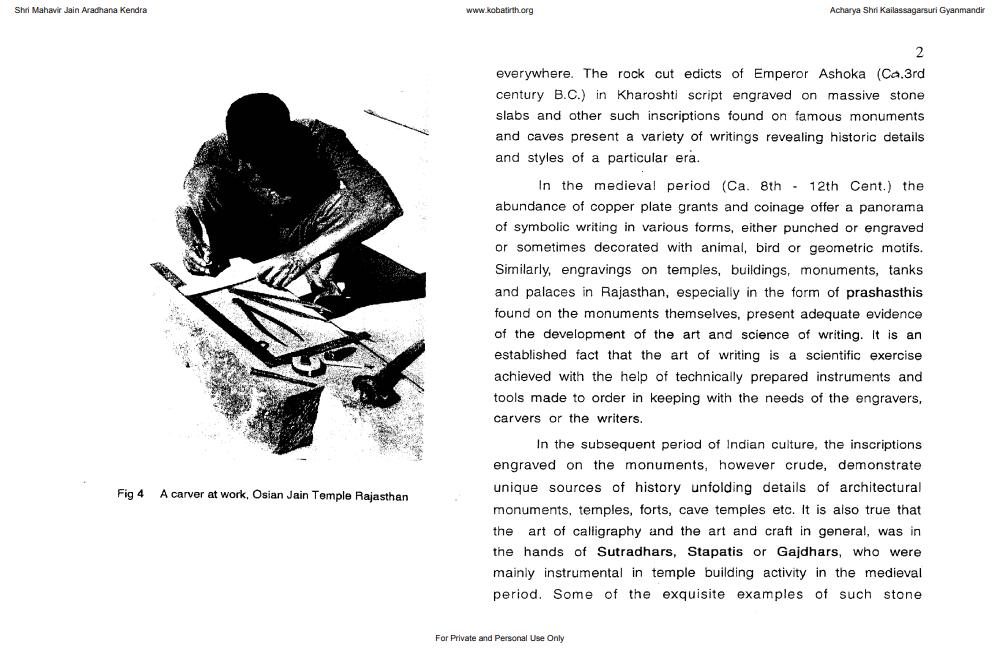Book Title: Science and Art of Calligraphy and Painting Author(s): S Andhare Publisher: Indian National Science Academy View full book textPage 9
________________ Shri Mahavir Jain Aradhana Kendra www.kobatirth.org Acharya Shri Kailassagarsuri Gyanmandir 2 everywhere. The rock cut edicts of Emperor Ashoka (Ca 3rd century B.C.) in Kharoshti script engraved on massive stone slabs and other such inscriptions found on famous monuments and caves present a variety of writings revealing historic details and styles of a particular era. In the medieval period (Ca. 8th - 12th Cent.) the abundance of copper plate grants and coinage offer a panorama of symbolic writing in various forms, either punched or engraved or sometimes decorated with animal, bird or geometric motifs. Similarly, engravings on temples, buildings, monuments, tanks and palaces in Rajasthan, especially in the form of prashasthis found on the monuments themselves, present adequate evidence of the development of the art and science of writing. It is an established fact that the art of writing is a scientific exercise achieved with the help of technically prepared instruments and tools made to order in keeping with the needs of the engravers, carvers or the writers. In the subsequent period of Indian culture, the inscriptions engraved on the monuments, however crude, demonstrate unique sources of history unfolding details of architectural monuments, temples, forts, cave temples etc. It is also true that the art of calligraphy and the art and craft in general, was in the hands of Sutradhars, Stapatis or Gajdhars, who were mainly instrumental in temple building activity in the medieval period. Some of the exquisite examples of such stone Fig4 A carver at work, Osian Jain Temple Rajasthan For Private and Personal Use OnlyPage Navigation
1 ... 7 8 9 10 11 12 13 14 15 16 17 18 19 20 21 22 23 24 25 26 27 28 29 30 31 32 33 34 35 36 37 38 39 40 41 42 43 44 45 46 47 48 49 50 51 52 53 54 55 56 57 58 59 60 61 62 63 64 65 66 67 68 69 70 71 72 73 74 75 76 77 78 79 80 81 82 83 84 85 86 87 88 89 90 91 92 ... 158
